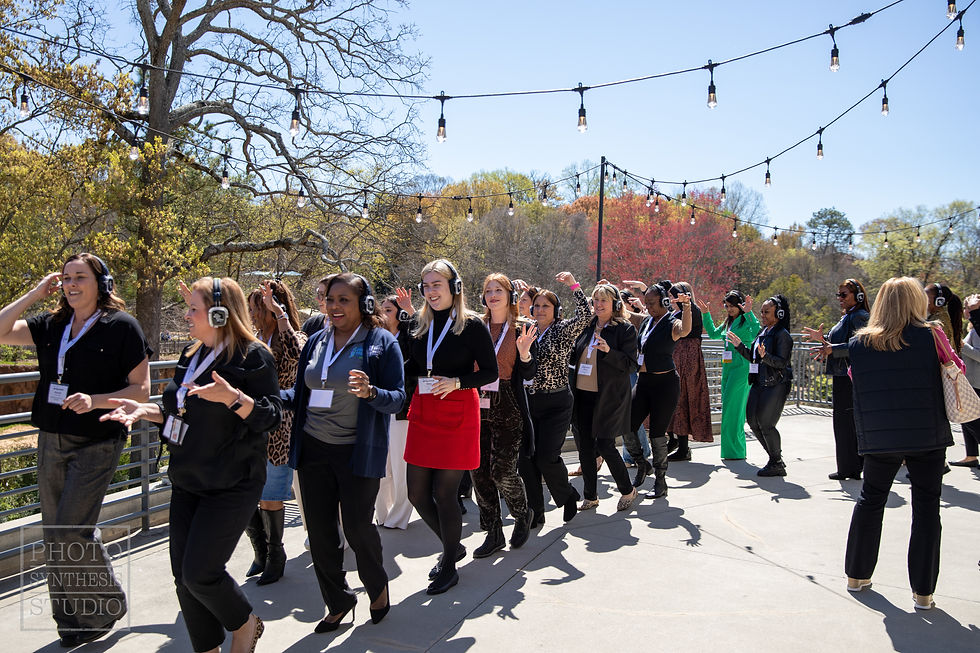From Fear to Trust: Boosting Psychological Safety at Work
- carolina2900
- Nov 9
- 4 min read

In today’s fast-paced corporate world, teams are constantly told to “communicate better,” “collaborate more,” and “bring their authentic selves to work.” Yet beneath these ideals lies a quiet truth: many employees still feel afraid to be fully seen. They hesitate to share ideas, admit mistakes, or express emotions — not because they don’t care, but because they don’t feel safe.
This invisible barrier — fear — is one of the biggest obstacles to psychological safety at work, and it’s costing organizations creativity, innovation, and genuine human connection.
The Roots of Fear in the Workplace
Fear at work doesn’t always look like fear. It often hides behind masks — professionalism, perfectionism, or silence. But its roots are surprisingly universal.
Fear of Judgment
Many professionals worry that showing vulnerability — whether by asking for help or sharing a personal challenge — will make them seem weak or unqualified. In competitive work cultures, this fear can grow quietly until it becomes ingrained behavior.
Perfectionism and Performance Pressure
When organizations equate worth with productivity or flawless execution, employees begin to associate mistakes with failure rather than learning. The result? A workplace where people hide errors instead of discussing them, stifling growth and innovation.
Hierarchical Barriers
In many corporate environments, hierarchy creates a silent divide. Team members may fear that being open with leadership — about ideas, feedback, or even burnout — could have professional consequences.
Why Vulnerability is a Strength, Not a Weakness
The research is clear: teams that cultivate psychological safety at work consistently outperform those that don’t. Google’s landmark Project Aristotle study found that the most successful teams weren’t the smartest or the most technically skilled — they were the ones where members felt safe to take risks, make mistakes, and be authentic.
Vulnerability is the foundation of this safety. It’s what allows people to say, “I need help,” “I made a mistake,” or “I have an idea that might sound crazy, but hear me out.”
When leaders model vulnerability, they create permission for everyone else to do the same. And when vulnerability becomes part of a team’s culture, trust, creativity, and true collaboration follow naturally.
Mindset Shifts to Overcome Fear
Transforming workplace fear doesn’t happen overnight, but it begins with intentional mindset shifts — both at the individual and organizational levels.
Shift from “Proving” to “Learning”
Replace the drive to always appear competent with the courage to stay curious. When employees feel that growth is valued over perfection, they become more willing to take creative risks and share unfinished ideas.
Normalize Emotional Language
Teams that can name emotions — stress, overwhelm, excitement — are better equipped to support one another. Leaders can model this by checking in with their own emotions first, setting a tone of empathy and openness.
Celebrate Honesty as Much as Achievement
Recognize team members not only for their wins, but also for their willingness to share challenges or lessons learned. When honesty is rewarded, fear loses its grip.
Reframe Feedback as Collaboration
Instead of viewing feedback as criticism, approach it as a dialogue aimed at collective improvement. Language matters: saying “Let’s explore this together” fosters safety and shared ownership.
Daily Practices to Build Courage and Trust
Building vulnerability into workplace culture requires consistent small actions — moments that remind people it’s safe to be human at work.
Start Meetings with Check-ins
A simple “How are you arriving today?” can open space for authenticity. Even brief moments of personal reflection can shift group dynamics toward empathy and understanding.
Encourage Reflective Pauses
After intense discussions or decisions, invite a short moment of silence. This helps people ground themselves, process emotions, and respond thoughtfully rather than reactively.
Practice Mindful Movement Together
Integrating short, guided moments of movement — even five minutes of stretching or dancing — breaks tension and reconnects the team with presence. Activities like Be You Disco experiences weave mindfulness, music, and movement to help teams express emotion and release stress in safe, judgment-free ways.
Model Openness as a Leader
Vulnerability starts at the top. When leaders share their learning moments or express uncertainty, it sends a powerful message: you don’t have to be perfect to lead. You just have to be real.
How Be You Disco Helps Teams Move from Fear to Trust
At Be You Disco, we’ve seen how movement and mindfulness can unlock authenticity faster than words alone. Our guided experiences use music, dance, and reflection to help teams drop the armor of professionalism and reconnect to their most human selves.
Wearing silent disco headphones, participants are led through a journey of rhythm and self-expression — moments of stillness, joy, and release. Without judgment or hierarchy, people rediscover what it feels like to move, laugh, and breathe freely together.
This embodied experience naturally builds psychological safety at work because it helps people practice vulnerability in motion. They let go of self-consciousness, connect through shared energy, and carry that trust back into the workplace long after the music fades.
A Future Built on Trust and Humanity
Workplace cultures are evolving. The most innovative organizations of the future will be those that understand that trust — not fear — drives excellence. When employees feel safe enough to bring their full selves to work, they contribute more creativity, compassion, and courage to the collective.
It starts with a single shift: seeing vulnerability not as a risk, but as the bridge to connection.
At Be You Disco, we believe in helping teams cross that bridge — one mindful beat, one shared breath, one brave movement at a time.









Comments